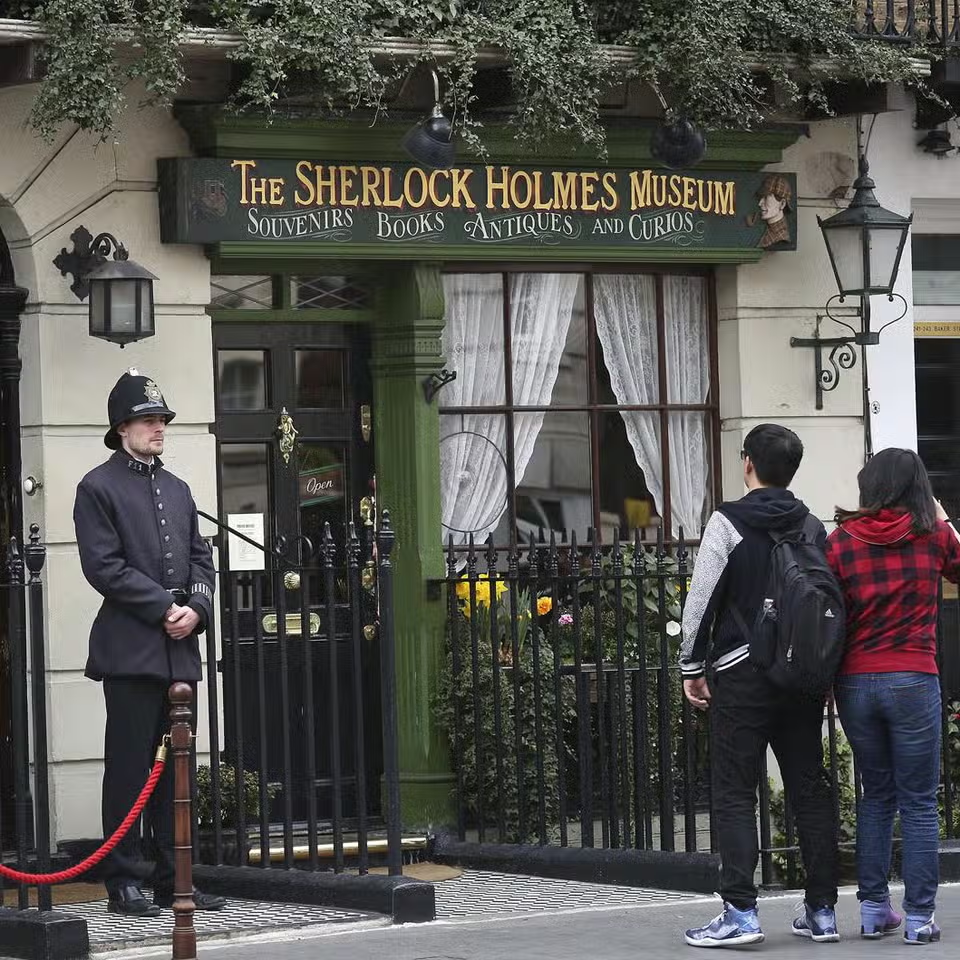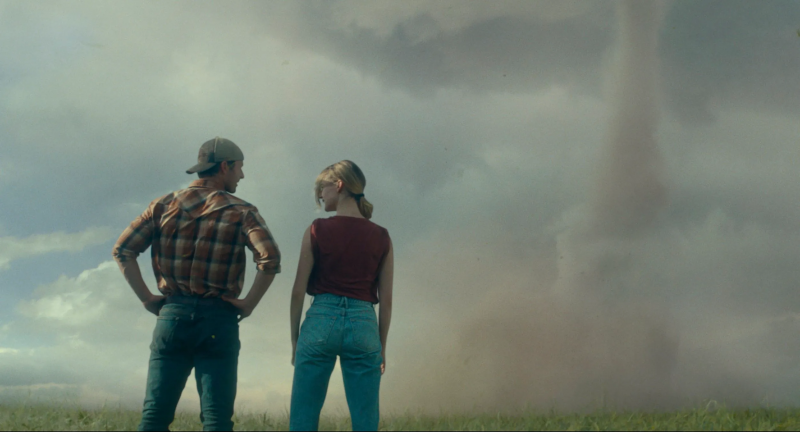
Twisters has taken cinemas this summer by storm, whipping up the biggest-ever domestic opening weekend in the US for a natural disaster movie.
From fireworks being set off within tornadoes, to people being (literally) blown away and a cinema screen ripped clean off, the movie has offered fans a lot of spectacle, following on loosely from the 1996 film Twister, starring Bill Paxton and Helen Hunt.
But how much of it really rings true? Well, the answer may surprise you.
Metro.co.uk spoke to meteorologist and extreme storm chaser Matthew Cappucci, 26, who works across the US as weather app MyRadar’s atmospheric scientist – tracking, following and reporting on America’s biggest tornadoes.
Here he gives us the scoop on the science – and accuracy – of Twisters…
Up Next
People do get blown away by tornadoes
This happens a lot during Twisters, and the threat of it is ever-present – but how realistic is it that people would put themselves in that amount of danger?
‘It’s actually not terribly uncommon,’ Cappucci reveals. ‘Unfortunately, tornadoes have so much powerful upward suction that anything caught in its path, whether it be a building, a vehicle or a person – if they’re not sheltered – can essentially be sucked up and away.’
He refers to a real-life case of someone being sucked up by a tornado and ‘carried 1400 feet down the road and survived to tell about it’, which he believes is the record.
All of the above is shown in Twisters, emphasising the multi-faceted dangers of the storm system.
Cappucci adds: ‘We always warn people when it comes to tornadoes, the hazards are twofold. Number one, if you’re not below ground, you could be sucked up and away. But number two, even if you’re in a shelter, it’s not just that the wind is blowing, it’s what the wind is blowing; you can be impacted or impaled by objects flying around.’
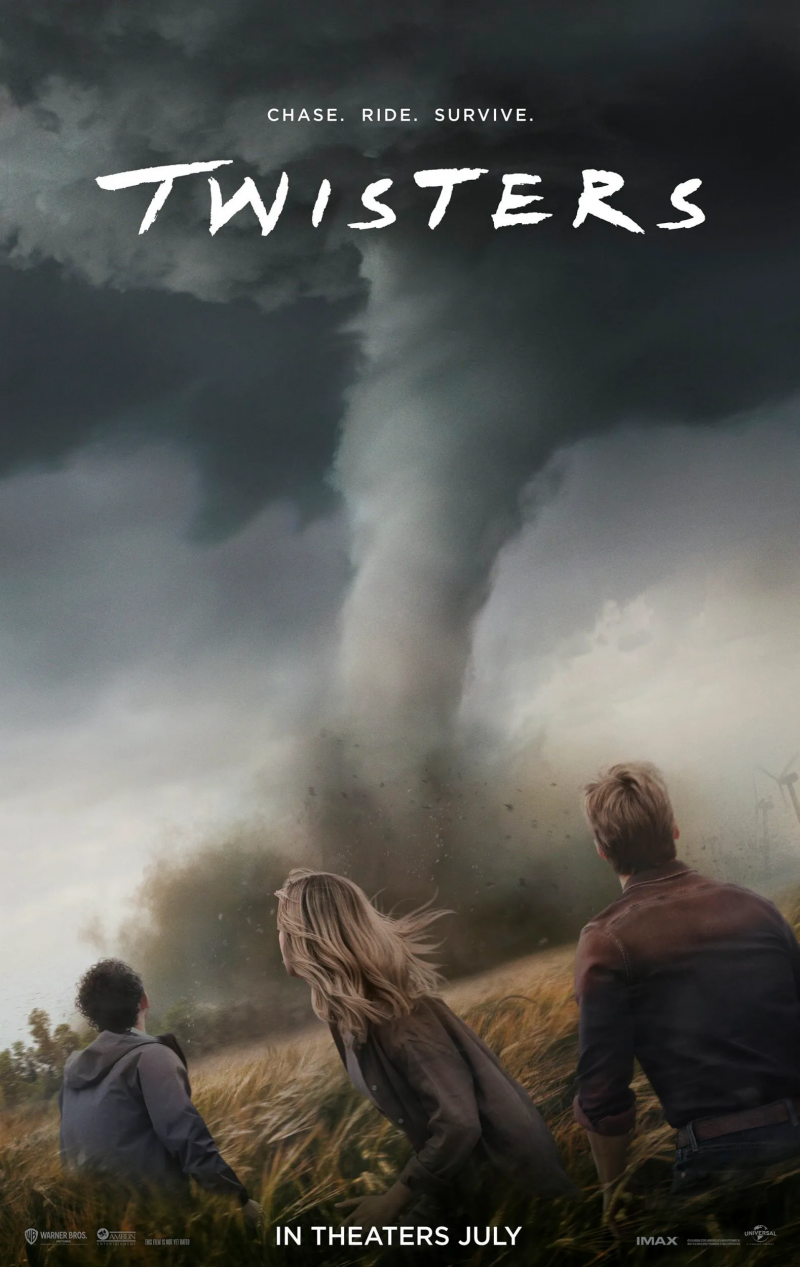
But you’re more likely to die from a head injury or drowning
In Cappucci’s own storm chasing he has had a roof ‘fly across the road right in front of me, over my head’, as well as corn falling from the sky and hitting him, He explains that, in the strongest tornadoes, ‘debris can be carried 50 kilometres or more’.
The Harvard graduate confirms that it’s more common that people are killed by what tornadoes suck up and drop back down than actually being sucked away themselves.
‘Most deaths in tornadoes stem from either head injuries caused by collapsing buildings or blunt force trauma from people being impaled by debris.’
However, that’s not the most distressing thing – and this is alluded to in Twisters when some characters take shelter in an empty pool and are also desperately trying to locate a basement, which is the safest place to be in the path of a tornado.
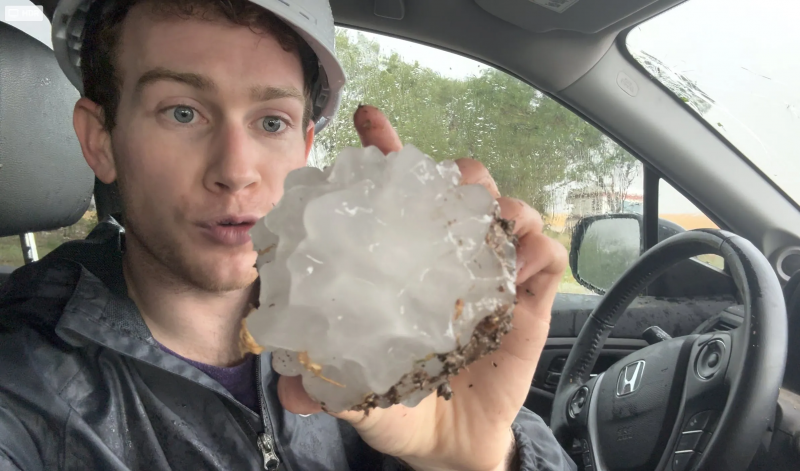
‘There have even been instances of people who are trapped in buildings that collapse after the tornado. They can’t get down in time and rain floods wherever they are, perhaps their basements, and they essentially drown.’
As Cappucci warns of his experience in tornadoes: ‘Not to sound morbid, but the entire storm is trying to kill you. You have floods and rains, heavier rains than you can possibly imagine, heavier than the rainforest. You have chunks of ice the size of grapefruits trying to shatter your windshield and cause you to lose visibility. You have lightning strikes like you wouldn’t believe, you have hurricane-force winds – then you can see nothing.
‘And then, at the last minute, hopefully you get a glimpse of the tornado.’
The ‘twin’ tornadoes in Twisters is a real-life reference
During one of Twisters’ extreme weather scenes, the storm-chasing teams head off in pursuit of one tornado, only to realise there are now two – and they have to pick which one would be best to follow.
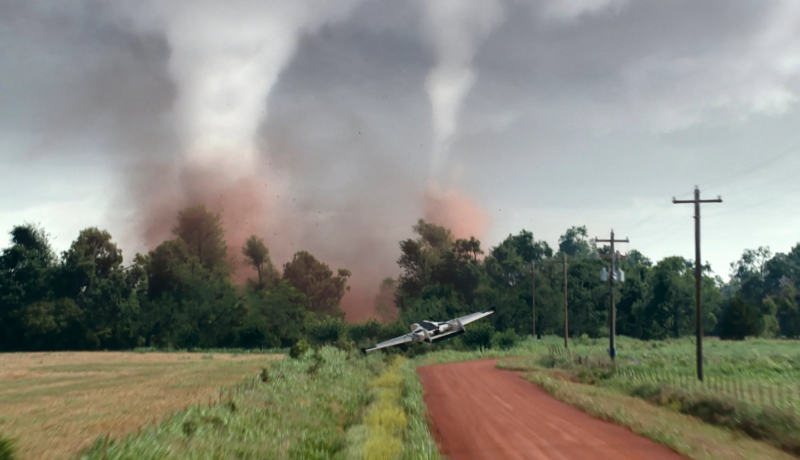
Severe thunderstorms ordinarily produce more than one tornado, ‘cycling’ the tornado on the ground every 15-20 minutes to produce up to 10 in a row, Cappucci explains.
But the phenomenon in Twisters is more unusual, having two ‘mature’ tornadoes on the ground at the same time.
This rare event is a ‘tongue-in-cheek’ reference to a storm from June 16, 2014, in Pilger, Nebraska, Cappucci shares.
‘Two EF4 (Enhanced Fujita scale) tornadoes, so top-end tornadoes, formed less than a mile and a half to two miles apart, and they tore through town in parallel with each other.’
EF4 means its winds were recorded at between 166 to 200 miles per hour with devastating damage left behind. There’s only one level up from there, which requires winds at above 200 miles per hour and destruction on an ‘incredible’ scale.
‘Eventually, the southern one won out, as was the case in Twisters, but for several minutes they were on the ground together.’
El Reno in the film experienced the biggest tornado ever recorded
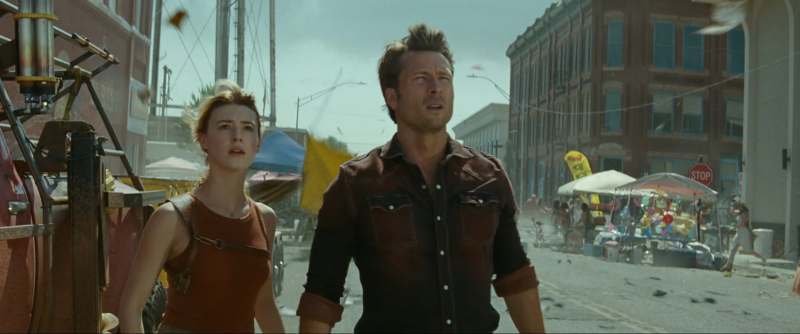
El Reno, 30 miles west of Oklahoma City, is considered a ‘very important town’ in meteorology, according to Cappucci, and it’s the setting of Twisters’ climactic scene and storm.
On May 31, 2013, a 2.6-mile-wide tornado hit the town – the biggest that’s ever been observed anywhere in the world – with winds of 300-plus miles per hour, ranking at EF5 levels.
It killed eight people, including storm chaser and ex-Discovery Channel star Tim Samaras.
‘He was the last one anyone ever thought would be hit by a tornado, but the storm just expanded so quickly that they couldn’t outrun it,’ Cappucci says.
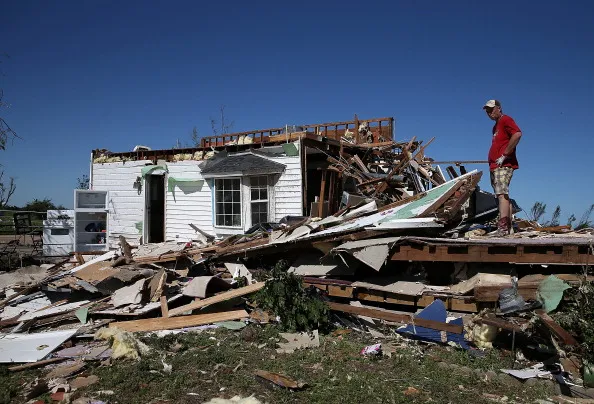
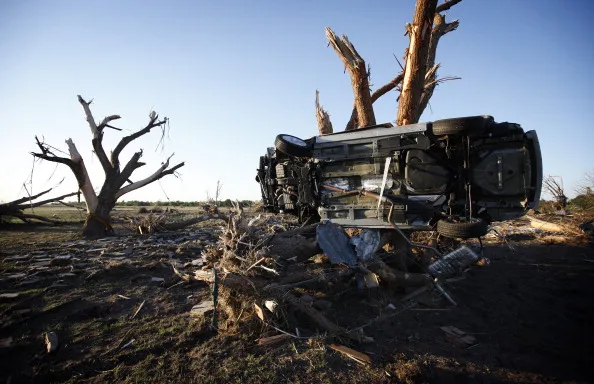
Since then, the meteorologist explains that El Reno has become like ‘hallowed ground’ in the community, with a memorial there now.
Its inclusion in Twisters was very significant to meteorologists and storm chasers.
‘El Reno has been through a lot, so when the final scene of the movie happened there but had a happy ending, I think that was a sort of a mythological allusion to how important that place is – but giving it a nicer ending.’
Storm chasers really do take those extraordinary risks
To many watching Twisters, it might be bizarre seeing the droves of people driving toward tornadoes, despite the risks.
However, it’s one of the best ways to learn more about them, track them – and then be first on the ground afterward to help any affected communities.
For Cappucci, it all comes down to ‘experience, comfort and risk, how much risk you’re willing to tolerate’.
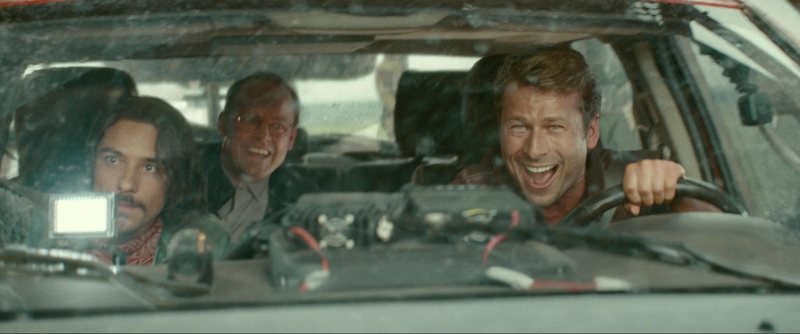
In April, he was as close as 100 meters to what he dubs ‘a massive, massive tornado’ – but he had multiple escape routes identified and the tornado was moving away from him.
‘You never really want to fly too close to the sun – because if you’re right, you get a really good picture. If you’re wrong, you die,’ Cappucci puts it starkly.
He is anticipating a day in the next five to 10 years when something will go wrong and ‘one or more big name storm chasers are killed by tornadoes’.
As Twisters shows, there are many storm chasers on the scene now, with everybody clamouring for the best video footage and even creating traffic jams, which is called ‘chaser convergence’.
Amateur storm chaser and meteorology graduate Bonnie Bishop agrees.
She’s lived in Oklahoma nearly her whole life and has observed the increase in chaser traffic over the past few years.
‘Twisters also showed chasers stopping the chase to help people and towns that had just been struck by a tornado, which is something many storm chasers do here,’ she confirms.
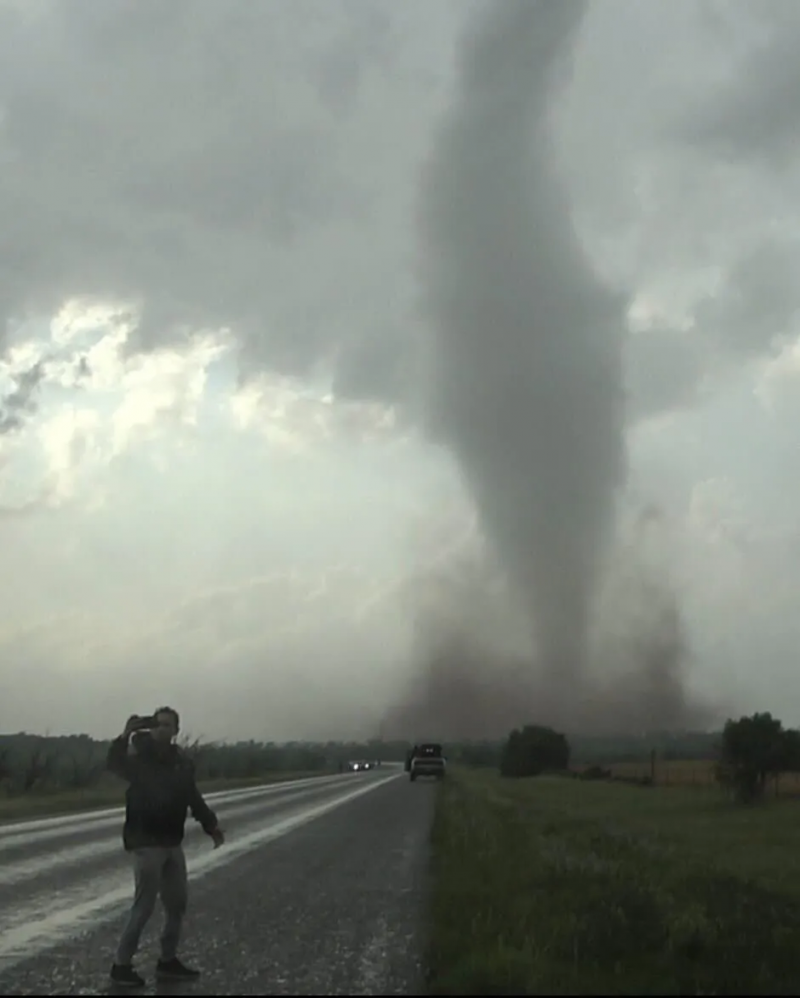
Cappucci is torn over trying to restrict access though, even if it would lessen the issue of traffic.
‘Much like in the movie, we saw some people are doing research, some are doing relief missions, some are out there to learn more about severe weather themselves, some are there for photography, some people are media live streaming where the tornado is so people will take shelter. And other people are out there just because it’s so damn cool,’ he reels off.
‘Nobody has more of a right to be there than anyone else. But the issue is that some people have more of an ability to be there. Nine times out of 10 it’s decently easy, but that one time out of 10 – I fear that the hobbyists won’t know what they need to, to get themselves out of a dangerous situation. And we will unfortunately see more people hit.’
Bishop, a 34-year-old Oklahoma State Department of Health official, praises Twisters too for depicting the frightening experience of being in the path of a tornado.
‘Watching the movie, I could feel the intensity and urgency that most Oklahomans experience when storms and tornadoes occur. It really captured the fear and devastation that communities experience when they are impacted by a tornado.’
There’s a real storm chaser with a reinforced vehicle like Glen Powell’s
Glen Powell’s self-proclaimed ‘tornado wrangler’ Tyler Owens drives a fully souped-up and modified truck for storm chasing, which includes giant screws by the wheels that can be drilled into the ground to provide extra security.
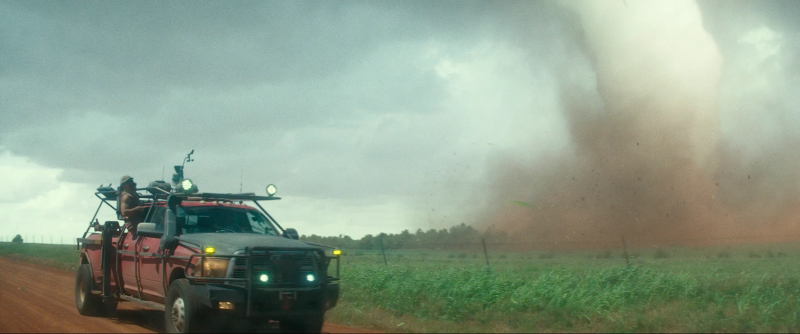
This means, ostensibly, that Tyler can drive directly into a tornado without (as much) fear of being blown away.
To the non-expert, this seems very risky still – but Cappucci reveals this vehicle is based on a real one owned by Reed Timmer, who he considers ‘the most extreme tornado chaser there is’.
‘He has a specially built vehicle that is essentially a tank on wheels, and he will try to position himself inside of tornado, drill down to the ground, and [has] panels that drop down. He’s in a reinforced vehicle with reinforced glass and [will] ride it out,’ Cappucci explains.
‘So there are one or two particularly… bullish storm chasers who will do that,’ he adds, while making clear he respects Timmer’s talent, but confirms that that level of risk is not something he will entertain.
The weather-related Easter eggs are appreciated
Twisters does not get everything right – Cappucci points to the sudden tornado hitting the rodeo, surprising all the experts, and Daisy Edgar-Jones’ meteorologist character Kate Cooper’s ‘scientific’ method she’s developing to destroy a tornado instantaneously (‘If it was [possible], we’d already be doing it’).
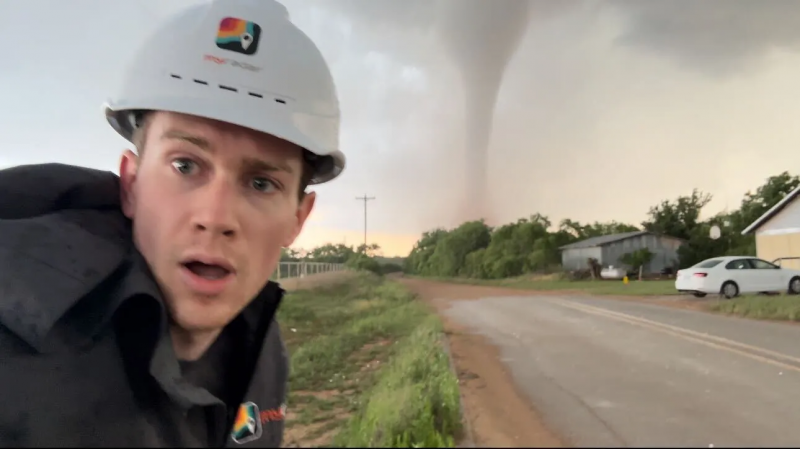
But that’s not to say there wasn’t a lot of preparation and science that went into the film, which is something that has not gone unnoticed by Cappucci and his colleagues.
‘I loved how much research they did. The CGI and the special effects, all the little subtleties of what a rotating storm looks like, how it behaves, what the tornado itself looks like, what the storm chase is like – they really did capture what it looks and feels like quite well.’
Bishop also singled her favourite part of the film out as ‘the science’.
‘There were so many meteorological terms and discussion of atmospheric dynamics; it made it real and believable.’
Cappucci was also pleased to clock a few cameos from real-life meteorologists, including the local TV weather reporter in Oklahoma City and Rick Smith, the warning coordination meteorologist for the US National Weather Service in Norman, Oklahoma, who also consulted on Twisters.
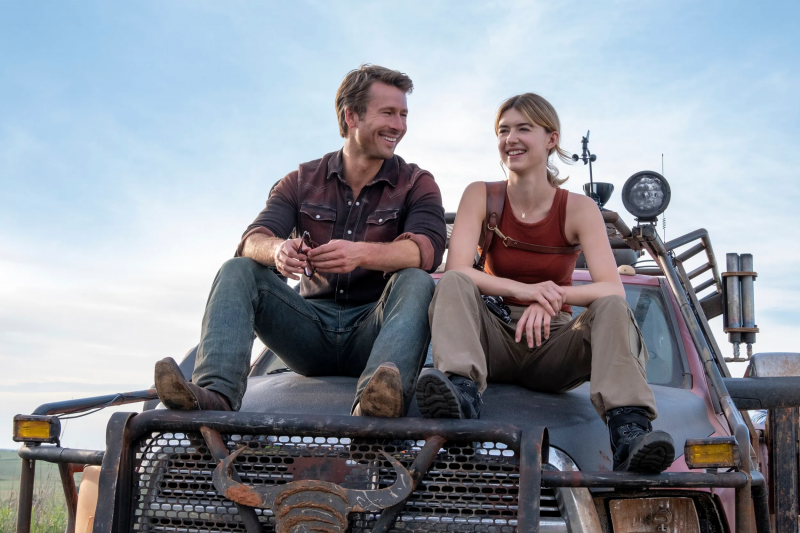
‘It was also nice seeing scientists portrayed as cool and knowledgeable rather than just nerdy – that was one thing I loved about the first Twister film too.’
And one final aspect of Twisters that has his whole-hearted support is the movie’s slow-burn romance between Edgar-Jones and Powell’s weather experts.
‘I love the fact that storm chasers find love because let’s be honest, it’d be nice if I had a co-pilot or a passenger seat occupant down the road. It hasn’t happened yet, but it’s a nice happy ending of the film that we all want.’
And he’s fine that their onscreen kiss got cut too, because that makes Twisters ‘more a story of a woman going full circle and realising her science rather than it just being sort of a mushy, gushy love story’.
Twisters is in cinemas now.
Got a story?
If you’ve got a celebrity story, video or pictures get in touch with the Metro.co.uk entertainment team by emailing us celebtips@metro.co.uk, calling 020 3615 2145 or by visiting our Submit Stuff page – we’d love to hear from you.

Disclaimer: The copyright of this article belongs to the original author. Reposting this article is solely for the purpose of information dissemination and does not constitute any investment advice. If there is any infringement, please contact us immediately. We will make corrections or deletions as necessary. Thank you.



